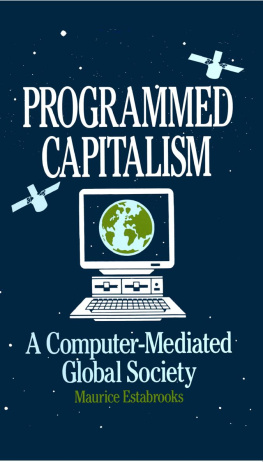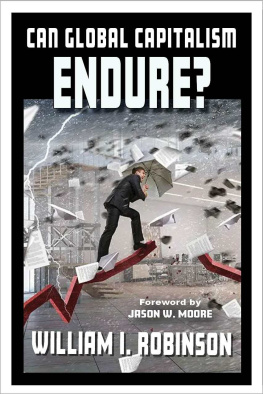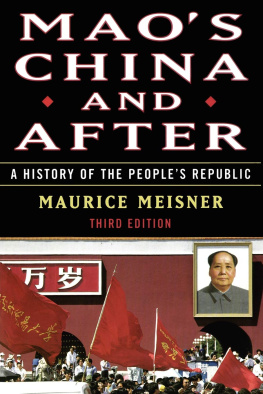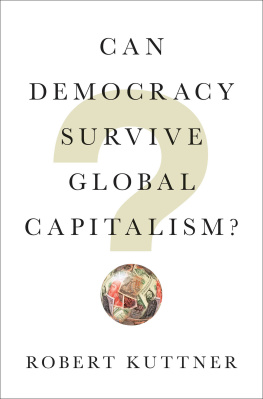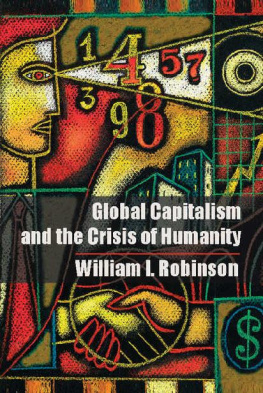First published 1988 by M.E. Sharpe
Published 2015 by Routledge
2 Park Square, Milton Park, Abingdon, Oxon 0X14 4RN
711 Third Avenue, New York, NY 10017, USA
Routledge is an imprint of the Taylor & Francis Group, an informa business Copyright 1988 Taylor & Francis. All rights reserved
No part of this book may be reprinted or reproduced or utilised in any form or by any electronic, mechanical, or other means, now known or hereafter invented, including photocopying and recording, or in any information storage or retrieval system, without permission in writing from the publishers.
Notices:
No responsibility is assumed by the publisher for any injury and/or damage to persons or property as a matter of products liability, negligence or otherwise, or from any use of operation of any methods, products, instructions or ideas contained in the material herein.
Practitioners and researchers must always rely on their own experience and knowledge in evaluating and using any information, methods, compounds, or experiments described herein. In using such information or methods they should be mindful of their own safety and the safety of others, including parties for whom they have a professional responsibility.
Product or corporate names may be trademarks or registered trademarks, and are used only for identification and explanation without intent to infringe.
Library of Congress Cataloging-in-Publication Data.
Estabrooks, Maurice, 1943-Programmed capitalism.
Bibliography: p.
Includes index.
1. Computers and civilization. 2. Technological innovationsSocial aspects. 3. Capitalism. I. Title.
QA76.9C66E88 1988 303.4834 88-4476
ISBN 13: 9780873324809 (hbk)
To Lisa, Lorie, and Ahren
Contents
List of Figures
Figure 1.1Conceptual Model of a Computer-Initiated Societal Metamorphosis
Figure 1.2The Computer Transforms and Mediates the Eight Basic Functions Performed by the Market Economy.
Figure 1.3Evolution of Money as Market Exchange Medium and Its Relationship to the Organization of the Economic System.
Figure 1.4Relationship Between the Real Economic System and the Intelligence and Psychological Economic Systems.
Figure 1.5The Four Pillars of the Financial Community and the Industrial and Institutional Boundaries of Industrial Society Before the Computer.
Figure 2.1Industries Involved in the Development of the New Computer-Based Information Industry.
Figure 3.1Industries Involved in the Development of the Computer-Based Money and Payments System.
Figure 4.1Industries Influencing the Evolution of Computer-Based Trading.
Figure 6.1Stakeholders in the Financial Supermarkets Game.
Figure 8.1Hierarchical Power Structures and the Economic Order in Traditional Society and a Computer-Mediated Society.
The nature of socioeconomic change is a subject of special concern to everyone at this time, when scientific and technological advances and breakthroughs are being made each day, and economic and political changes are taking place at an unprecedented rate. Even the definition of work is changing. This book is about all these changes. It is about the impact of computers on our economic system and on our society in general, and it develops the theme of a metamorphosis or transformation of society that has been initiated and is being propelled by the computer and by every person and organization using it.
The book posits that American society, like all Western societies, is evolving into a global society that is entirely mediated by computers. The book should leave no doubt in the readers mind that the basic rules, laws, and institutions under which industrial society has operated for several centuries are in a period of profound change and that a new society operating under new rules, new dynamics, and new institutions is in the making. This book describes not only how this transformation is taking place but also why it is taking place. Finally, it looks into the future to ponder how computers will affect our society.
views current events from the perspective of the twenty-first century. It briefly describes how every sector of the economy is being transformed by the computer and how the profound technological and economic metamorphosis already well underway is causing a fundamentally new social, economic, and political order. It also briefly examines history, particularly the Industrial Revolution, and the dynamic nature of capitalist change as described by economist Joseph Schumpeter. It proceeds to develop and describe a model of societys transformation by the computer.
The model consists of both hierarchical and horizontal dimensions, beginning with microlevel changes that affect the nature of work, management, and the corporate organization. These changes ultimately transform the relationships among various sectors of the economy and affect the ways they are administered at the political level. In turn, they affect the political and economic institutions and the operation and organization of society.
Fundamental to the metamorphosis and the model is the view of the economic system as an information-processing and intelligence system, with the information, banking, and financial services sectors at its core. The effect of computerization on this core segment of economic activity is to mutate the nature of capitalism.
This view suggests that the information, banking, and financial services sectors of the economy constitute the leading edge of the transformation of the market and the capitalist system. The emerging computerized global infrastructure has begun to mediate all the uses of money, capital, and wealth, and has changed the way economic and political power are wielded at both national and global levels.
, and 4 describe the computerization of special segments of the economic intelligence system, beginning with the information segment, proceeding to the money and payments segment, and on to the electronic trading segment. The underlying technology of each component of the new infrastructure is described, together with the ways in which corporate players apply it strategically. This technology changes the corporate organization in profound ways, and the resultant corporations in turn change the marketplace in which they operate. The strategies of several major corporate players in the information, banking, retailing, and other industries are detailed.
traces the stages in the evolution and transformation of global stock exchanges, culminating in the formation of computer-based global linkages between the exchanges in the major centers of the world. It also examines the events of October 19, 1987, the day stock markets around the world took their biggest beating in history.
Computer-based infrastructures are sources of enormous synergies and economies of scale that, combined with programmable features and multifunctional capabilities, made it possible for companies such as Merrill Lynch, Citicorp, American Express, and Sears, Roebuck, to create financial supermarkets. This is the subject of .



